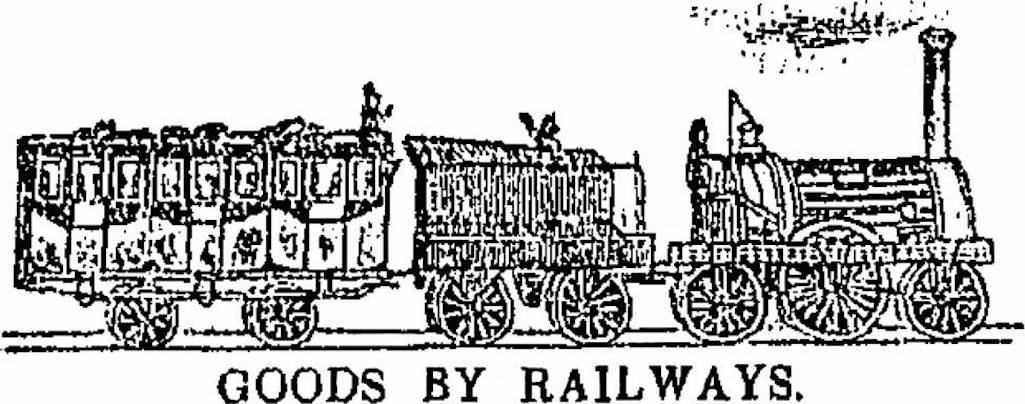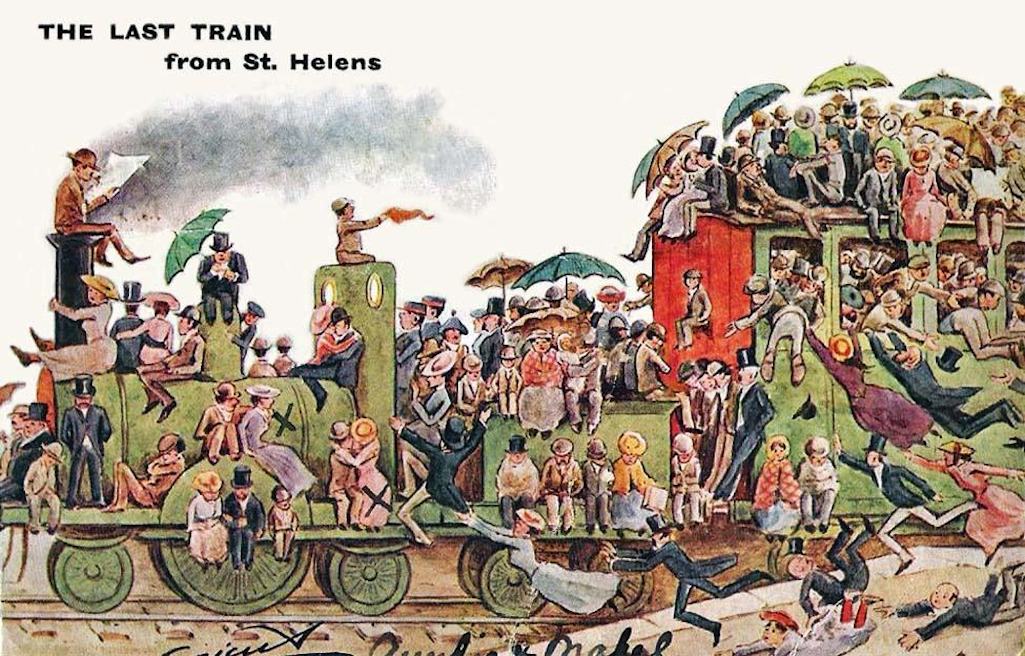20th March 1755 - Sankey Brook Navigation Bill receives Royal Assent
1757 - The first stretch of the Sankey Brook Navigation opened.
1770s - Sankey Brook Navigation reaches north Sutton.
1st January 1811 - The Liverpool to Manchester stage coach with 5 passengers inside and several on top crashed at Bold Heath after its axle broke. The driver was thrown some distance, fracturing his arm and an outside passenger was injured.
5th May 1826 - The Liverpool to Manchester Railway Bill receives Royal Assent.
1828 - Ellen Hughes agreed to sell land at Lea Green so the planned Liverpool to Manchester railway could cross her Sherdley estate.
6th October 1829 - First day of the Rainhill Trials held on a two mile stretch of level line between Lea Green and Rainhill.
20th October 1829 - A report by civil engineer James Walker into the comparative merits of locomotive and fixed engines on the proposed Liverpool to Manchester railway (and described in the Manchester Mercury) stated that the incline at Sutton was 1½ miles long and rose 1 foot in 96.
29th May 1830 - The Bill authorising the construction of the St Helens and Runcorn Railway to transport coal from St.Helens to Spike Island, Widnes, received its Royal Assent.
15th September 1830 - The Liverpool and Manchester line opened at a cost of £739,165. Lea Green station also opened.
21st September 1830 - The Manchester Mercury reprinted a Liverpool Albion article on the return leg of the inaugural Liverpool – Manchester service: “On arriving at the Sutton inclined plane, the engines lost all power, and the train fell back through its own gravity. An order was then issued, that as many of the passengers as could walk should alight from the carriages, in order to diminish the weight. Nearly all the gentlemen accordingly alighted, and walked, in darkness and amidst rubbish, a distance of between one and two miles, until, the top of the plane being reached, we once more took our seats.”
2nd January 1832 - The line from St.Helens Station to the Liverpool and Manchester Railway at St.Helens Junction was opened for freight traffic.
24th September 1832 - An experimental steam carriage passed through Bold Heath on the last part of its journey from Birmingham to Liverpool. Made by Ogle and Summers, it attracted great attention on its journey, which with stops for repairs, took 3 - 4 days at speeds of around 10 to 15mph.
November 1832 - St.Helens and Runcorn Gap Railway first used. At Sutton men and horses assisted in hauling coal trains up an incline until a stationary engine was built. The line crossed the L&M line via an intersection bridge, the first place in the world where a railway crossed a railway.
21st February 1833 - St.Helens and Runcorn Gap Railway officially opened.
1833 - St.Helens Junction station opened.
6th August 1834 - At 10 o'clock a 7-year-old girl walking on Sutton incline became confused by two trains that were travelling up and down the incline at the same time. She crossed the rails several times and was knocked down by an engine and died on the spot when its waggon wheels passed over her breast.
28th February 1835 - Engine driver Ralph Thompson was killed at the foot of Sutton incline through a points failure. Thompson was thrown off his engine and the wheels of his locomotive passed over him crushing him to death.
19th March 1835 - John Murphy, the 46-year-old gatesman at Sutton incline, was cleared of causing the manslaughter of Ralph Thompson through negligence.
23rd November 1838 - The St.Helens and Runcorn Gap Railway station house on the Sutton incline was burgled. The Manchester Courier reported that a "gang of thieves, who have recently committed considerable depredations in the hundred of West Derby, are suspected." 21st July 1845 - Royal assent given for the creation of the St.Helens Canal & Railway Co., created by the merger of the competing companies.
30th March 1847 - A loose rail caused an engine, tender and goods wagons to be thrown off the line at St.Helens Junction, near to a passenger train. Fortunately it was travelling at just 10 mph and no injuries were caused.
1st August 1848 - At the AGM of the St.Helens Canal & Railway Co. it was revealed that the large-scale "alteration of the Sutton inclined plane”, which was 1½ miles long, was nearing completion.
30th October 1848 - During the late morning George Green was struck by a buffer of an express train, while calling for another man to assist him. This was probably his neighbour and co-worker James Birchall. Green broke several ribs and he died at 4pm. The 54-year-old had been a porter / railway policeman on the Sutton incline for 9 years.
1st February 1849 - John Smith of Sutton took over the operation of St.Helens & Runcorn Gap Railway.
26th January 1850 - Samuel Harvey, railway clerk at Sutton sheds, was almost decapitated by the train that he'd cadged a lift with.
13th July 1850 - An article in the Manchester Courier complained of the state of the station at St.Helens junction which had no waiting room and was a "dangerous place of landing for passengers".
1st February 1851 - Platelayer William Ramsden was "frightfully mutilated" at the foot of Sutton incline while crossing the rails. He was struck by the engine and tender that hauled trains up the incline and "cut in pieces". Ramsden, a widower, was brother of the St.Helens Junction stationmaster and left 5 orphan children.
9th August 1851 - Six-year-old Stephen Highcock was decapitated by the 3 o'clock express whilst playing at St.Helens Junction station.
20th September 1851 - The Manchester Courier reported that "The St.Helens Railway Co. are about to erect a commodious new station at the junction with the main line at Sutton."
24th April 1852 - 33-year-old Sutton glassmaker William Bradshaw was killed by a train near the old station after sitting with his legs across a rail whilst drunk.
1st August 1852 - A train accident on Sutton incline led to serious injuries to a number of passengers. The accident was as a result of the engine taking the train's carriages up the incline in two shifts. On its way down after taking up the first batch, the engine got up too much speed and caught the remaining carriages.
1852 - Sutton (St.Helens) station at Sutton Oak first appeared in timetables.
c.1852 - Clock Face station opened (reduced to halt status from July 1926).
1853 - A station at Bold was opened but closed in 1858.
28th February 1854 - Eccleston farmer Joseph Yates received very serious injuries at St.Helens Junction station. He was drunk and instead of crossing the line to get to the Liverpool train, Yates jumped on the buffer of the last carriage of a Manchester train. It began to depart, Yates jumped off and was dashed to the ground.
2nd July 1854 - The 9am passenger train from Liverpool to St. Helens collided at Sutton with an engine that was returning to the engine shed from St.Helens. Fortunately there were no serious injuries.
19th September 1854 - Margaret Johnson received serious - probably fatal injuries - after being knocked down by a train of waggons after crossing the railway near the old Junction railway station.
9th December 1854 - Joseph Rigby, described as an "old man" was knocked down by an engine while crossing the railway lines at Ravenhead. A wheel passed over his neck "nearly severing his head from his body".
15th May 1855 - Charles Tomlinson, labourer at Ravenhead Copper Works, was killed on the railway at Sutton after being crushed between two waggons.
30th July 1856 - 18-months old Sarah Green was run over and killed in Sutton by a cart driven by Robert Grace.
15th October 1856 - A carter working for timber merchant Richard Harrison was filling his cart with lime from a lime waggon of the Mineral Lime Depot near the old Junction station when the 12:10pm passenger train from St.Helens arrived. Its shrill whistle frightened the horse which ran into the path of the train and was killed. The cart was decimated and the shocked carter ran away and went missing.
3rd November 1856 - William Worsley was seriously injured after falling off Sutton engine shed while roofing it in dense fog.
1st May 1858 - Two-year-old Joseph Burrows was knocked down by an engine leaving Sutton Copper Works while crossing the line. It severed his right arm and leg and he quickly bled to death.
23rd June 1858 - Platelayer Richard Appleton fractured his skull when he fell backwards while getting on a waggon in Sutton, his head hitting the rails.
6th September 1858 - Two engines (named Hero & Goliath) collided on the Parr Colliery branch line which led to the Hero crashing into the stationmaster's house at St.Helens Junction while he was in bed, cutting it in two. The stationmaster's family were uninjured but a 14-year-old lad named Charles Whittaker, who was clinging to the engine, was 'frightfully mangled' and killed.
7th October 1858 - Fireman Joseph Grace was run over by waggons whilst unhooking them from an engine on the Sutton to Lea Green incline and died in Liverpool Infirmary.
24th June 1859 - An inquest on 25-year-old platelayer John Robinson was held at the Clock Face Inn. He was undertaking a repair on a shunting near the pub when he was run over by a luggage train, cutting off his right leg and smashing his left.
26th December 1859 - A woman was killed on the spot by a passing train after crossing the line at St.Helens Junction station while waiting the arrival of the 8pm train from Manchester.
5th January 1860 - A brakesman named Arthur Hilton was shunting some waggons into a siding at St.Helens Junction and got onto an engine to speak to an engine man. In getting off the engine, Hilton's foot slipped and he fell with his arm across the rail. The engine then completely severed it from his body.
7th January 1860 - Three trains collided on Sutton incline. In its report of the accident on the 9th, the Liverpool Daily Post wrote: 'It is a remarkable fact that though there are many more dangerous stations on the London and North-western Railway than St.Helen's Junction, yet it has always been noted for misfortune...Strange to say, it is the fourth accident which has occurred at this place in the short space of one month.'
18th January 1860 - The 5.15pm express train from Liverpool ran into a horse and cart on the level crossing at the bottom of Sutton incline killing the horse and smashing the cart to pieces. The Liverpool Daily Post wrote: 'It is only wonderful that the train was not thrown off the line, and the consequences more fearful'. The driver, who was employed by farmer Thomas Johnson of Bold, had his arm broken.
7th February 1860 - A collision occurred between two 'luggage trains' at St.Helens Junction, after one came down Sutton incline at great speed and struck the waggons that the second train was shunting.
17th March 1860 - Another accident took place on Sutton incline when a train ran into a departing goods train, breaking several waggons and tearing up the platform.
17th April 1860 - A large 'luggage train' with two engines was seen to be on fire as it was going down Sutton incline. The train was stopped at Sutton Moss and a burning waggon of cotton was unhooked and quickly removed to Warrington Junction where the large blaze was extinguished.
7th April 1861 - The census conducted on this date stated that the stationmaster at Sutton Oak Station was Thomas Thompson and the St.Helens Junction stationmaster was Parker Whitehead.
25th February 1863 - William Healer was knocked down by a passenger train at the Ravenhead crossing in Peasley Cross Lane while wheeling his barrow over the lines and "frightfully injured", dying two days later.
4th July 1863 - 22-year-old Thomas Ackers was killed on the railway while shunting waggons at St.Helens Junction. His inquest was held at the Golden Cross.
18th July 1864 - 46-year-old Mary Litherland was fatally injured and her 3-year-old child was seriously hurt after leaping from a train at St.Helens Junction station. The mother had incorrectly believed that they were on the wrong train and the pair slipped under its wheels.
1st August 1864 - The St.Helens Canal and Railway Co. was absorbed into the London & North-Western Railway (LNWR).
1st September 1864 - Runcorn Gap station was renamed Widnes station.
29th October 1864 - A notice in the Liverpool Daily Post stated that 'the station now named Sutton, will in future be called Sutton Oak'.
4th November 1864 - A collision took place in the fog on Sutton incline near St.Helens Junction. A carriage was damaged and two passengers were slightly injured.
5th October 1865 - 32-year-old James Smith of Peasley Cross was run over at St.Helens Junction after slipping while uncoupling coal waggons and falling under their wheels. He received "dreadful injuries" and died the following day.
27th November 1865 - 53-year-old Eliza Jones of Worsley Brow was killed by a coal train at Peasley Cross station when crossing the line.
8th June 1867 - A spark from an engine shunting on the L & NW line caused an extensive fire at Nuttall’s bottleworks at Ravenhead causing £500 damage.
3rd September 1867 - Coach driver James Tighe was severely injured at St.Helens Junction. He worked for coach proprietor John Marsh and was proceeding to collect a wedding party and convey them to church. As his coach passed over a railway crossing it was struck by a bank engine "shivering it to atoms".
1st January 1869 - The last passenger train from Widnes to St Helens ran into the rear of a coal train near Clock Face Station. The coal train had been slowed down by an incline and was probably overloaded. Several of its carriages were thrown off the line by the impact.
21st January 1869 - An iron bar in a coal train wagon that was projecting at a right angle, broke ten windows of a passenger train from Widnes as the two trains passed each other in between Clock Face Bridge and Sutton Sheds, startling but not injuring passengers.
6th March 1869 - A suspected con man called George Langham made a dramatic leap from a train near St Helens Junction fracturing his skull. The man had been accused of swindling a fellow passenger out of a sovereign.
4th June 1869 - A collision took place near to Sutton Oak station between a light engine and a passenger train. Government inspector Colonel Yolland said a Sutton Oak Junction signalman had instructed a train driver to proceed despite a warning signal. However he apportioned most of the blame on the company’s management who had permitted such a system.
4th September 1869 - A man was thrown out of the Widnes train between Clock Face and Farnworth stations while it was in full motion. This was after a violent dispute with other passengers. When the train arrived at Widnes, the guard was told what had occurred and during the return journey, he and others searched for the missing man but no trace could be found. The men had been to St Helens to watch a foot race at the Dog and Rabbit race ground.
13th September 1869 - Thomas Holmes, the former master of Whiston workhouse, attacked Dr. Rayner on a platform at St Helens Junction station while he was waiting for a train, covering his face with blood. Dr. Rayner had previously been the medical officer at the workhouse and had reported Holmes to the Guardians of the Prescot Union and ultimately the master had been sacked. Five weeks later Holmes was fined £5 at the Prescot sessions for what the magistrates said was an offence of 'unpardonable character'.
27th September 1870 - The Times reported that the Sutton (St Helens) station had been redesignated Sutton Oak station (also see 29th October 1864).
14th November 1870 - A coal train standing in a siding near Sutton Junction was struck by a bank engine which turned into the same siding at the opposite end, smashing both engines. Both sets of drivers and stokers escaped by jumping off their engines. The line was blocked for several hours.
16th December 1870 - A collision occurred at Peasley Cross, when the 9:30am passenger train from St.Helens Junction to Wigan struck a coal train, which had stopped to take in water. Most of the passengers were violently thrown off their seats and three received serious injuries. They were taken to the Temperance Hotel in St.Helens where they were treated by Dr. Ricketts.
23rd January 1871 - Martha Draper was crossing the line over a level crossing at St.Helens Junction when she was knocked down and seriously injured by an express train.
20th May 1871 - Margaret Lamb returning from market, left a train at Peasley Cross thinking it was Sutton Oak station and ended up on the line. The engine ran her down, killing her on the spot.
7th October 1871 - Samuel Lucas of Convent Row was killed when walking from Sutton Oak station along the railway lines to his home. The train from Widnes run him over cutting off a foot and his face was "completely smashed". His son James, then a booking clerk, later became stationmaster at Sutton Oak.
2nd November 1871 - The London & North Western Railway advertised for tenders from contractors to construct a bridge over the railway at Lea Green.
1st January 1872 - The 5¼ mile long St.Helens to Huyton line was opened to passenger traffic reducing pressure at St.Helens Junction station. Previously passengers travelling from St.Helens to Liverpool had to change at St.Helens Junction. The new line reduced travelling time from an average 1 hour to 35 minutes.
28th May 1873 - A collision occurred near Sutton Oak Junction at 8pm between a passenger train and a goods train. A tender and four carriages were badly damaged.
8th October 1873 - The London & North Western Railway advertised in the Manchester Guardian for tenders from builders to construct a new passenger station at Sutton Oak.
22nd October 1873 - Engine driver Robert Wilson and railway blacksmith Thomas Rigby appeared at St.Helens Police Court charged with a violent assault on St.Helens Junction stationmaster James Bush.
24th October 1874 - The railway sheeting sheds at St.Helens Junction were almost completely destroyed by fire.
2nd December 1874 - Engine tenter William Williams was run over and killed by an engine near St.Helens Junction.
8th July 1875 - The London & North Western Railway advertised for tenders from builders to construct new station buildings at Peasley Cross station.
29th May 1876 - John Eden was fined £1 7s 6d plus costs for breaking a window at St.Helens Junction station and using abusive language to a ticket collector.
28th August 1876 - William Russell was fined ten shillings for riding between Manchester and St.Helens Junction stations without a train ticket.
1878 - Three groups approached St.Helens Corporation with separate proposals for providing horse-powered tram services.
24th May 1878 - 19-year-old brakesman Alexander Nelson died in hospital from injuries sustained on the previous day while shunting railway waggons at Sutton Oak Junction. Nelson had been riding on a waggon buffer when he fell off and the engine passed over him.
29th July 1878 - 19-year-old carter John Tilston, who worked for Peasley Cross contractor J. Harrison, was approaching Sutton Glassworks with a load of timber when his horse shied and he was crushed between his cart and the wall of the works. A cart wheel passed over him and Tilston soon died.
22nd November 1878 - Farmer James Hulme from Childwall was mysteriously found dead on the railway line near Collins Green station by miners on their way to work at Bold Colliery.
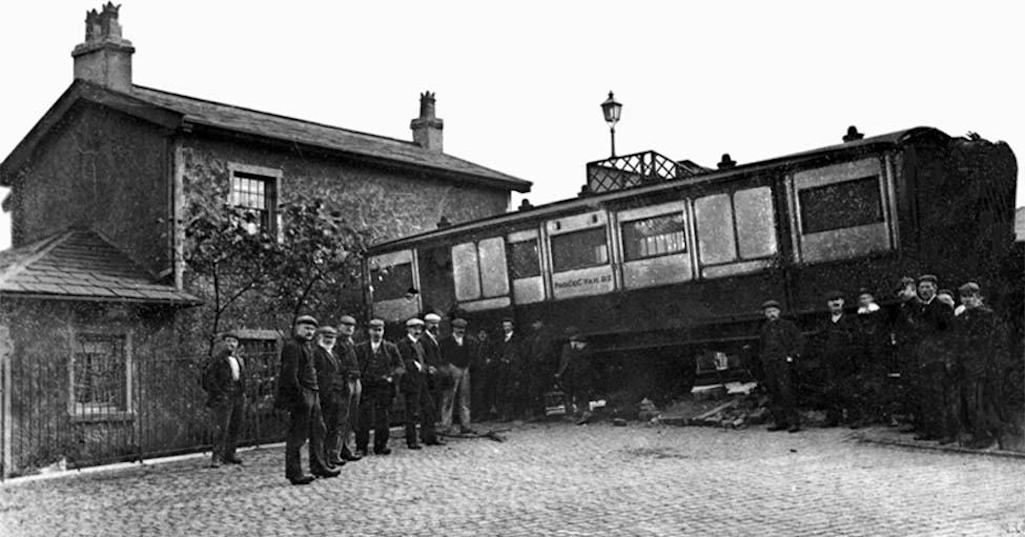
A crash at St.Helens Junction station in 1906 in which a train overran and struck the stationmaster's house

A train struck the stationmaster's house at St.Helens Junction in 1906

Junction station crash in 1906
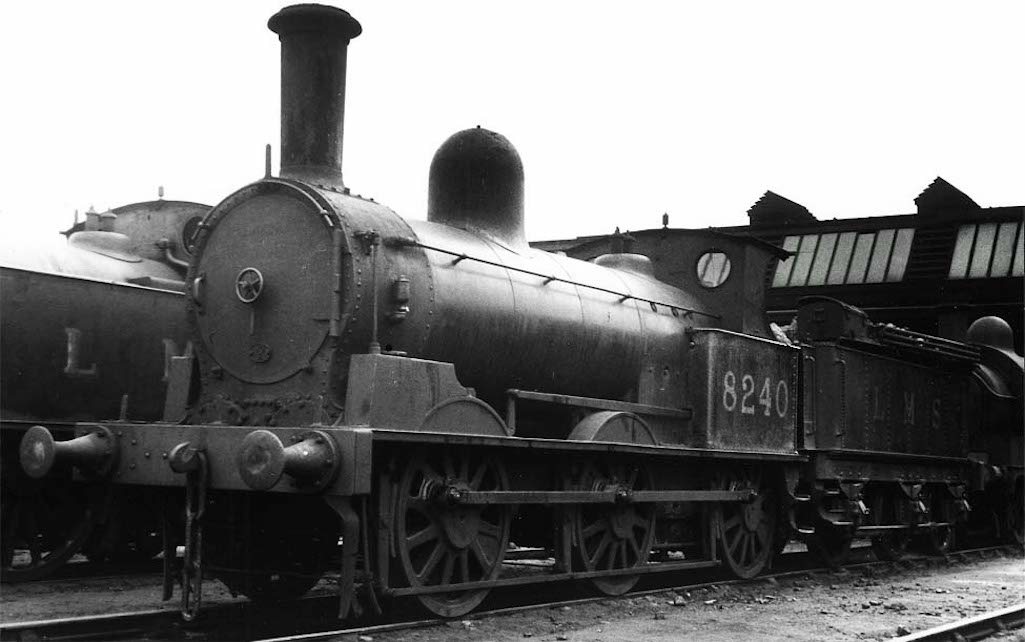
Loco at Sutton Oak Sheds off Baxters Lane (now Morrisons supermarket) photographed on 14th May 1939

Loco at Sutton Oak Sheds off Baxters Lane photographed on 14th May 1939

Loco at Sutton Oak Sheds in 1939

Advert in the Liverpool Echo from January 1915 for a driver for the new Sutton Manor bus

Liverpool Echo advert from 1915 for a driver for the new Sutton Manor bus

Advert in the Liverpool Echo of 1915
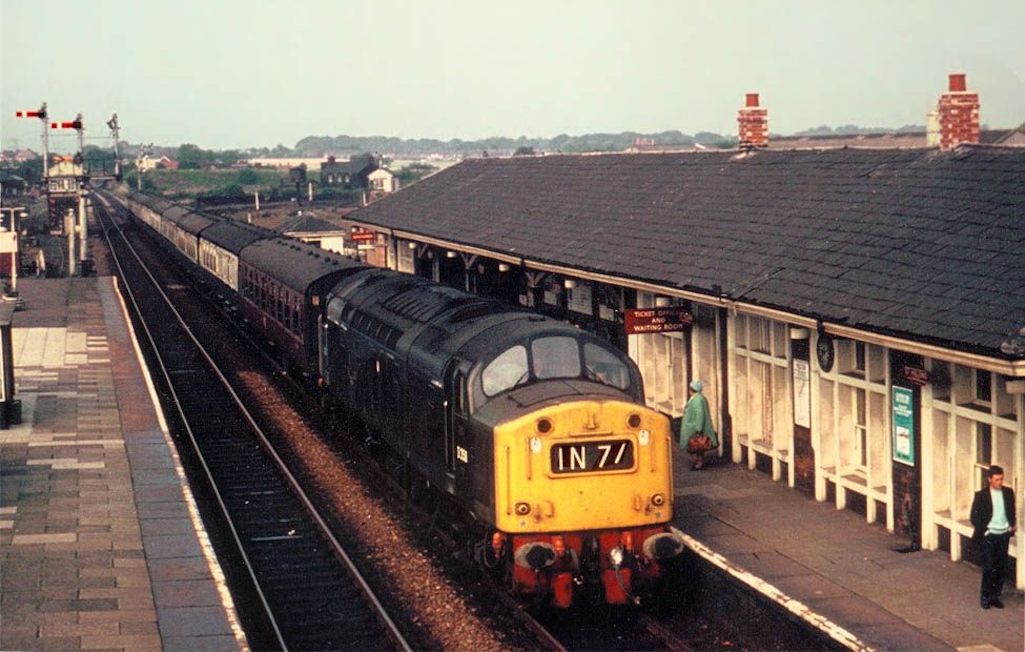
A Class 40 (D354) train arrives at St.Helens Junction station

A Class 40 (D354) arrives at St.Helens Junction station

Class 40 arrives at St.Helens Junction

